News 1/12/11
From Chi-Town Native: “Re: HIMSS. Their swearing off Chicago as a site for the annual conference helped trigger an overhaul of McCormick Place operations. Now they’re returning in future years.” HIMSS scratches its cross-town pal’s back by dragging all of us attendees back to Chicago in the bleak dead of winter (they call it "spring” there once the vernal equinox is past, even during the snow storms) in 2015 and 2019. Being a skeptic, I still fully expect to find overpriced hotels, surly workers, and the bad weather that vendors love since it keeps everyone hanging around the exhibit hall. Still, I found a list of proposed changes that sound good on paper: outsourced convention center management, allowing competing electrical contractors, letting exhibitors do some of their own tasks like sweeping or plugging in a monitor without having team of nasty union workers threatening physical violence, cheaper setup and food services, and free WiFi everywhere.
From Jerry MindMeld: “Re: Detroit Auto Show. The Car of the Year is one nobody you know has driven. What’s the car equivalent of your EMR? Bentley? Produces a cloud of smog like a 1981 Le Car? A souped-up ‘74 Camaro that only one guy can fix?” I told Jerry that some applications are like concept cars: they look good when being showed off by hot models, but when you try to buy one, you find they don’t really exist. I drive a beat-up econobox that’s seven years old, so obviously I’m one of those Point A to Point B types.
From Hello Larry: “Re: eHealth Entitlement in Canada. Despite what Canada Health Infoway has said about speeding up the Manitoba eHealth project, it is essentially dead due to mismanagement, poor planning, and lack of vision. The health minister, in the December announcement that IBM will run the project for $22.5 million, said ‘there has been no progress made, no clinical EMR consultants hired, and once again Canada Health Infoway has dropped the ball on Canadian taxpayers.’” Unverified.
From Longtime Informatics Professional: “Re: stop the presses. ONC clarifies the difference between EMR and EHR.” Their definition is the same as mine: EMRs are electronic versions of paper treatment records, while EHRs focus on the broader health of the patient and extend beyond a single provider’s walls to share information from all clinicians who provide that patient’s care. Where we differ is that ONC seems to believe such an animal exists, so they use the term EHR universally. I believe that’s wishful thinking and therefore EMR is still correct in most cases (certification as an EHR notwithstanding since that implies theoretical product capability, not actual use). I might also quibble that the R in both acronyms suggest the records (database), not the application(s) that created those records, so I stubbornly stick to calling those data-creating applications “clinical systems” on the hospital side, with the collective end result being an EMR (you can buy applications, but not an EMR unless a single product covers every single hospital department, including diagnostic images). I’m open to reader suggestions for better names since I dislike both of these.
Healthcare Management Systems (HMS) hires two execs: Jack Holt (McKesson) as VP of client services and Todd Redmon (Dell) as VP of customer support.
A Computerworld article suggests that FDA may start regulating hospital data networks that connect FDA-approved medical devices. It points out the now-legendary four-day network outage at CareGroup (BIDMC) in 2002 would have been much worse had they not run medical devices on a separate network that stayed up. Said a GE Healthcare systems designer, “I’ve been to meetings of biomedical engineers. If you ask them if there are any cases where IT has disrupted patient care, all their hands go up.” I’ll argue from the IT side, though: some of those so-called biomedical experts, especially on the vendor side, don’t know squat about enterprise networking — they’re used to just happily plugging their stuff into whatever open network jack they can find without letting anyone in IT know, then high-tailing it when the campus network starts crashing. Maybe both observations highlight the need for IT and biomed to be a single organization, perhaps with FDA oversight when medical devices are involved.
Calling all data geeks: Heritage Provider Network is offering a $3 million prize for creating an algorithm that can analyze patient information to predict which ones will need hospitalization six months in advance, which would allow providers to intervene and save the health system billions of dollars. Teams of any composition can pre-register now for the two-year competition. If you’ve ever worked with neural network training, it’s kind of like that: teams get three sets of de-identified patient data containing inpatient and outpatient encounters, medication dispensing, and outpatient lab results. They develop their algorithms using the Training Dataset, which contains a binary flag indicating whether or not the patient was admitted. Once teams have fine-tuned their algorithms, they run them against a Quiz Dataset and submit their results to see how well they predicted admissions. Then comes the grand finale: qualified teams run their algorithms against a Test Dataset to see if their algorithms merely regress well against a known result or whether they are actually predictive (most of the time, perfect regression curves and neural networks turn out to be dumb when fed additional data points).
I hear that National eHealth Collaborative (the former AHIC Successor that supports the Nationwide Health Information Network) will name a CEO in Wednesday.
Thanks to new HIStalk Gold Sponsor Elumin Healthcare Solutions, Inc. The Sammamish, WA company offers management consulting (selection, contracting, implementation, technology, and clinical transformation), consulting services related to products from its vendor partners (Allscripts, Cerner, Epic, and HealthWare Systems), and the MyWay PM/EHR and Payerpath claims management as an Allscripts reseller. They’re an official Epic Consulting Partner, in case you were wondering. CEO Mark Williams has a long industry history, including time spent at Intermountain and Siemens Medical, so you’ve probably run across him at some point. Thanks to Elumin for supporting HIStalk.
Google CEO Eric Schmidt says if he wasn’t running Google and if he wanted to get involved in healthcare IT, he would go to the major research universities to find existing software that could be open sourced, concluding that , “My guess is that a platform like that would be remarkably different from the platforms we are using today.”
Thanks to the 692 folks on the HIStalk Update e-mail list who have voted in the HISsies so far. I’ll send a final e-mail reminder Wednesday and we’ll finish it up. As I predicted, a few readers complained as they always do that (a) the nominees were not much different than last year; (b) I must be involved in a romantic relationship with Judy Faulkner since she and Epic were on the ballot a lot; and (c) I must be clueless to have missed some obvious nominees. To reiterate: anyone could nominate and all I did was take the top four vote-getting nominees (or five in one case of a tie) in each category and put them on the ballot.
I’ve also received a few e-mails about HIStalkapalooza. You haven’t missed anything: the online “I want to come” Web page will go up somewhere around January 21 and will be mentioned here. A rather impressive roster of specialists is finalizing details, like how to make an IngaTini and what time the band’s going onstage.
An article by the now-merged Huffington Post Investigative Fund and the Center for Public Integrity questions the digital divide that may be created as providers with affluent patients are able to invest more resources in electronic medical records that those that care for low-income patients (although if I were a wag, I’d say rich organizations may find their higher income and productivity going down if they buy and implement unwisely). I hadn’t heard of this group: National Health IT Collaborative for the Underserved, formed almost three years ago by groups such as HHS’s Office of Minority Health, a big government contractor, and HIMSS.
NCHICA (North Carolina Healthcare Information & Communications Alliance) is soliciting abstracts for its annual conference at the Grove Park Inn in Asheville, NC on September 25-28. The Word application form is here and is due February 1.
Former Eclipsys sales SVP Jay Colfer joins Prognosis Health Information Systems as EVP of client solutions. OpenView Venture Partners made an investment in the company last month.
Butler Health System (PA) says it has personalized patient care by using a location-driven patient flow and communication solution that includes products from Intelligent InSites (RTLS), Ekahau (patient and equipment RFID tags), and Vocera (caregiver voice communications).
The Supreme Court will decide whether states are allowed to ban the sale of prescription data to drug companies. Vermont outlawed the practice, but was sued by data mining companies and drug trade groups because that particular lack of privacy protection makes them billions.
HIStalk links to Epic-related stories provided so many incoming hits to website of The Verona Press that its top stories of 2010 had to be separated into Epic and non-Epic lists. They nicely mentioned HIStalk specifically. Epic articles outdrew other big news stories about deer season, a sausage factory fire, and bear sightings.
HERtalk by Inga
From Not Sheldon: “Re: Project Shoes. Last night’s Big Bang Theory TV show contained an idea for a smart phone application for a program where you can take pictures of cute shoes, and then learn where to buy them. Of course I thought of you.” I don’t know the TV show, but I love the app! It’s Shazam for Shoes! And speaking of shoes, Mr. H asked me if I wanted Dr. Jayne to provide some surgical shoe covers to help protect my shoe identity at our upcoming sponsor lunch at HIMSS. Of course I turned the idea down flat. I suppose he doesn’t see the sense in lugging a extra pair of shoes to Orlando when the shoes may only be worn an hour. I’m sure plenty of readers understand that sometimes it does make sense to pack six pairs of shoes for three days of travel.
Geisinger Health System (PA) will implement NextGate’s patient indexing software to enhance the sharing of clinical data across the organization.
Northeastern Pennsylvania HIE picks Covisint ExchangeLink to provide clinical messaging support for its participating physicians.
Southern Ohio Medical Center implements MetaCare IntelliDocs clinical documentation solution.
Keystone HIE (PA) and partner GE Healthcare announce plans to expand the region’s HIE to augment its chronic disease management capabilities. Area health case workers will have access to KeyHIE functionality to retrieve cross-team communications and receive auto-generated notifications of patient encounters.
IBM and Complex Medical Information Systems implement HIT solutions built on Lotus Notes Domino in several Russian public hospitals .
Spending for EHR by all providers is expected to grow to approximately $3.8 billion in 2015, with ambulatory EMR making up $1.4 billion of that number. A mere $2 billion was spent on EHR in 2009, including $633.5 million for ambulatory EHRs. That’s an overall compound growth rate of 11.5% and a whopping 14.2% in the ambulatory space. Just in case IDC Health Insights’ numbers are anywhere close to correct, you best hold on tight for the ride.
Michael Critelli, the former CEO of Pitney Bowes, is appointed president and CEO of Dossia, for which he had been serving as board chair.
Staggering: treatment costs for diabetes grew from $18.5 billion in 1996 to $41 billion in 2007. That includes $10 billion for outpatient care and $19 billion for prescription drugs. Nineteen million American adults were treated for diabetes in 2007, twice the number as in 1996.
With the hottie Dr. Jayne now on board, I am am more focused than ever on maintaining my youthful appearance, so this new, free iPhone app has come none too soon Beverly Hills surgeon Dr. Payman Simoni created it to let users to see how they might look with a bit of enhancing. You can upload a photo of yourself and then play around to create a new nose, face lift, or the like. I went for the eyebrow lift. I think it makes me look more surprised than young, so for now, I’ll continue seeking the fountain of youth.
E-mail (the un-enhanced) Inga.
Dr. Jayne
By now, you’re wondering, “Is Dr. Jayne really a physician? Does she actually see patients? Does she know what she’s talking about? Does she ever go out for cheeseburgers and beer, or perhaps the amusing house wine?” and other questions. The answer to all these (and many more) is yes! And so, Dear Readers, a bit more information about the newest HIStalk correspondent:
By day, you’ll find me in the CMIO trenches. By night — well, we’ll save that for another time. The life of a CMIO is never dull; there’s always a fire to be put out somewhere, and usually an angry physician behind the scenes holding a lit match.
I can’t blame them, though – they’re faced with tremendous changes that sometimes seem to threaten their core identity. Healthcare delivery didn’t change much for decades, but the past fifteen years have been Mr. Toad’s Wild Ride. Not only in the science behind the practice of medicine, but in how we are compensated, the equipment we must use, and the rules we must follow to care for patients. There are few industries that have gone through this pace of change. Physicians claimed E&M Coding was going to be the ultimate downfall of medicine in America. Meaningful Use makes that look tame by comparison!
My colleagues who view the profession as a calling tend to take this just a little bit personally. Each one of you has worked with these physicians. I spend a good chunk of time with docs like these, doing something between hand-holding and crisis counseling, depending on the person and the situation. Thank goodness for those psychiatry rotations that taught me never to sit between the agitated patient (or colleague) and the door.
When I’m not working directly with physicians, I’m exercising my clinical brain, working on evidence-based order sets, protocols, formularies, clinical reporting, training strategies, and making sure anything new is communicated in duplicate and triplicate for my colleagues who still refuse to read their e-mail (although I bet they use Facebook to see pictures of their grandchildren, but just won’t admit it.)
Speaking of Facebook, a shout-out to my new friends! I have a long way to go to catch up with Mr. H and Inga.
I also see patients, in an old-school, white-coat kind of way. I use the same systems that my colleagues claim I am using to interfere with the practice of medicine, force them into retirement, or otherwise torment them.
When I’m not handing out Kleenex or making sure we are doing quality clinical work, I exercise my technical brain. This is the part of me that loves playing “vendor Jenga” to see if we can actually make diverse clinical systems communicate with each other while using an amount of staff resources equal to half of what we asked for. Pull out the lower blocks and stack them on top – without toppling the tower! Tricky but challenging, and extremely rewarding when it works.
I enjoy working with our analysts and technical teams and helping them understand why (or why not) a particular piece of software is going to be accepted by clinicians or if we need to budget for our Implementation Analysts to start wearing Kevlar. And if they’re nice to me, I write my own SQL queries to get at information I want. And if they’re not nice to me, I might just play the “doctor card” and make sure they have no idea that I even know what Management Studio is. I also work closely with our vendors and doing the odd bit of development work and focus groups.
So, Dear Readers, now you know my skill set. Send me your provider-centric thoughts, questions, and conundrums. These will be answered in our new “Dear Dr. Jayne” feature – although I’ll be responding with a glass of wine in hand and you’re on your own for Kleenex.
Sponsor Updates by DigitalBeanCounter
- Voalte partners with Rauland-Borg Corporation to integrate Rauland-Borg’s Nurse Call with Voalte’s iPhone communications solution.
- MED3OOO’s InteGreat EHR V6.4 earns ONC-ATCB certification through CCHIT. MED3OOO also announces the appointment of Jim Altenbaugh as VP of tech services implementation and training.
- Vocera Communications acquires Wallace Wireless, a developer of software to deliver pages, text messages, and alerts directly to smart phones. The acquisition is Vocera’s fourth since October.
- Lancaster Hospital selects ProVation Order Sets from Wolters Kluwer Health.
- Chadron Community Hospital contracts with Keane Healthcare Solutions for the full suite of Keane Optimum applications, including Optimum Clinicals.
- Geisinger Health System is using Precyse’s NLP coding software and M*Modal’s NLP voice to text technology to enhance its clinical documentation and coding.
- Vermont Information Technology Leaders (VITL) selects Greenway’s PrimeSUITE EHR to leverage its REC; Colorado Regional Extension Center (CO-REC) does the same.
- Greenway also partners with DiagnosisONE to provide clinical decision support for its EHR deployments.
- NextGen releases v.5.6 SP1, offering several new enhancements such as clinical quality measures for Meaningful Use and 5010 healthcare transaction compliance.
- iMDsoft increases its global presence compliments of its MetaVision Suite, which went live at 45 sites, 11 countries, and in seven languages in 2010.
- OSF St. Joseph Medical Center (IL) renews its multi-year contract with GetWellNetwork and goes live with GetWellNetwork’s system integration for its Epic-based EMR.
- San Luis Valley Regional Medical Center (CO) signs a five-year technology outsourcing contract with CareTech Solutions.
- Holon Solutions will participate on an HIE panel at iHT2 Health Summit in Atlanta.
- CapsuleTech is hosting an enterprise device connectivity webinar on January 19th.
- Nuesoft announces its Nuetopia service that combines its EHR, billing software, and revenue cycle management services.
- Bridgehead achieves a 40% year-over-year income increase for FY2010 thanks to its focus on the healthcare vertical.








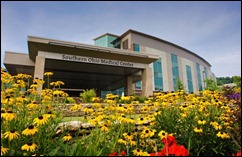
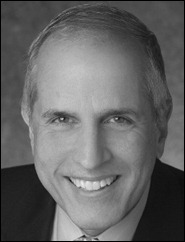




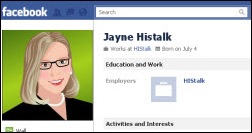

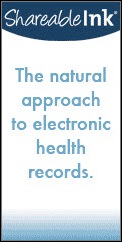
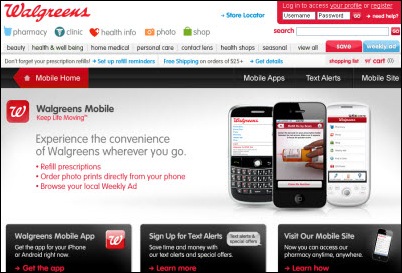
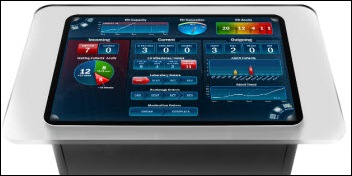
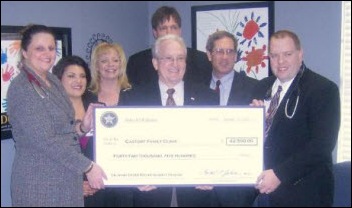

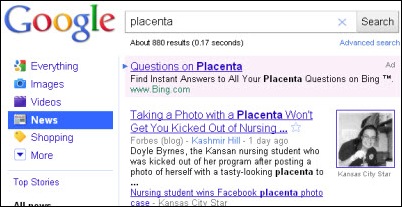


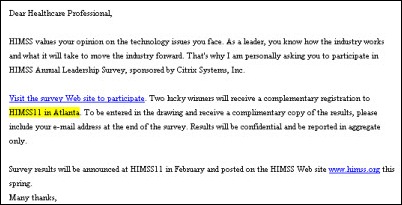

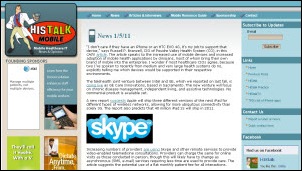
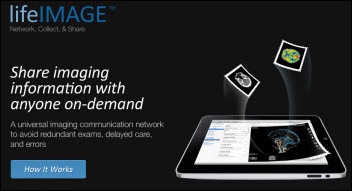
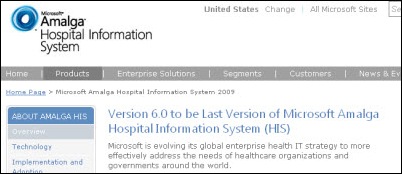
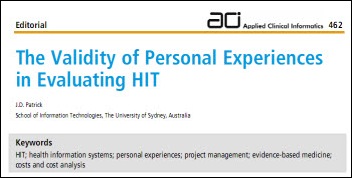
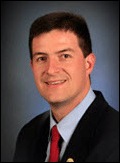
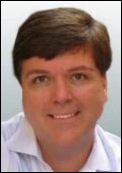


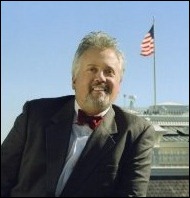

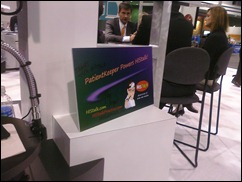


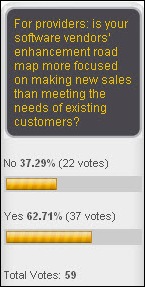
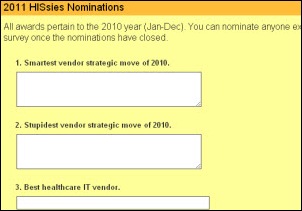



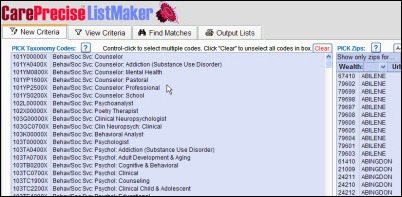
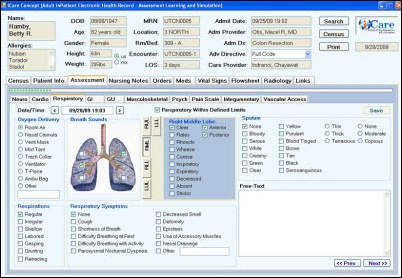
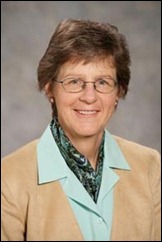

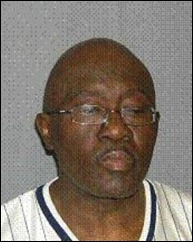
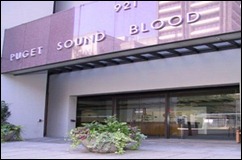



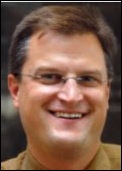



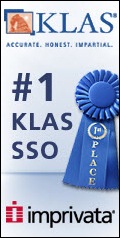
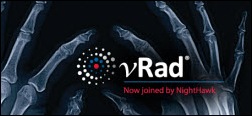
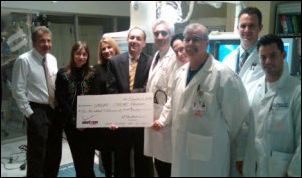




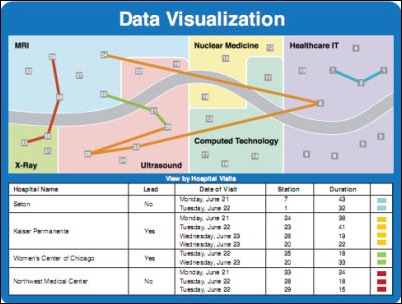


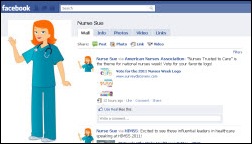


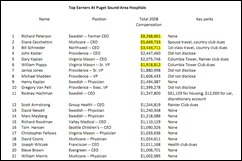

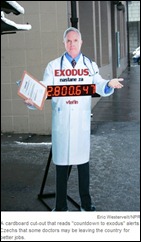


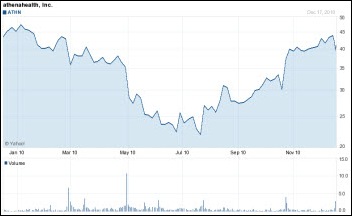
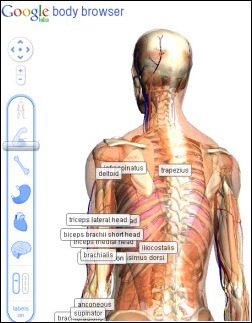

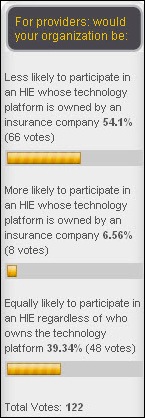
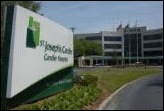


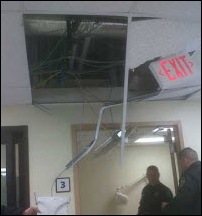
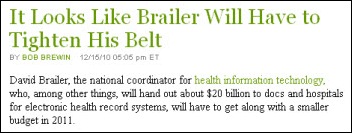
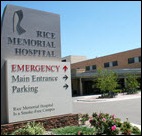


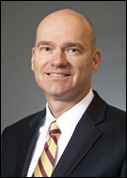
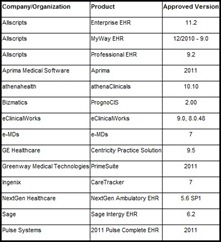
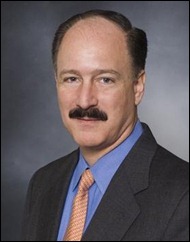

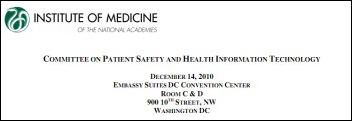
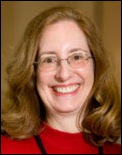




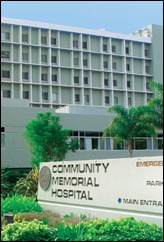



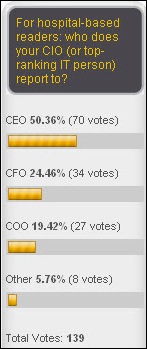
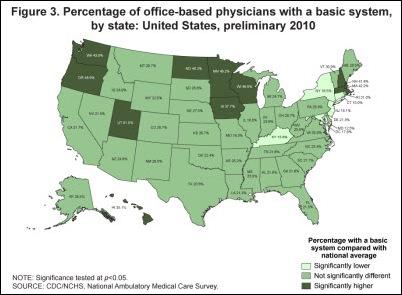

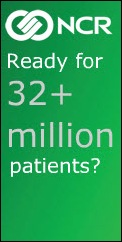
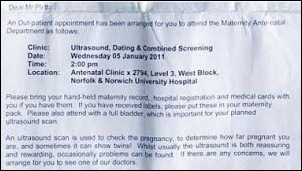
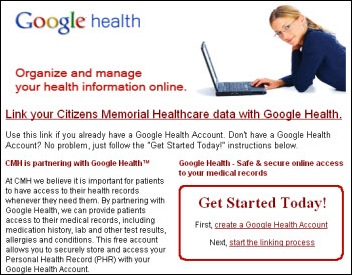
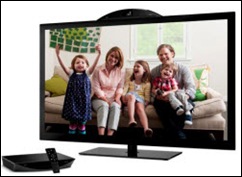
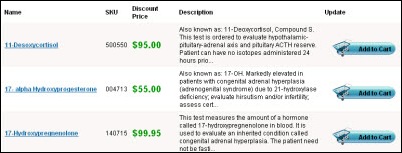

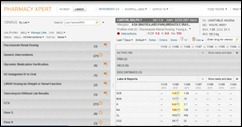













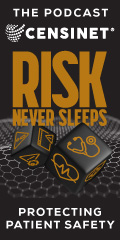





































































Would have liked to have seen more about Expanse here. Would like to see more about it on this site…